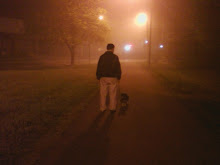Good Friday March 29, 2013
Texts: The Passion Story in Tenebrae Service, United Methodist Book of Worship
Quite often, during funerals, memorial services, celebrations of life, there is a time when people who knew the person whose life’s end we are marking get an opportunity to share a story about the deceased. It has been my privilege to hear funny and heart-warming stories in that setting, but sometimes things go a bit wobbly.
During one open sharing time, when I was a pastor someplace else, a family member got up and began telling a story about the man who had died. There was a family gathering and the beer was flowing freely. Some kind of rough house playing around was going on, and the man whose life we were celebrating, well he grabbed a broom and was swinging it around playfully, and took out a lamp.
The story-teller was laughing. Some in the congregation were chuckling, and I was trying to smile and be as affirming as I could be while listening to this story of what was sounding like a drunken misadventure. It seemed an odd choice of a story to tell during a funeral.
How odd that we have the story we will hear in a few minutes at the heart of our faith. All four gospels, whatever their differences, tell a similar story about the end of Jesus’ life – he was arrested, mistreated, brought up on charges, sentenced to death, and then executed. What an odd story to have as a shared narrative. And if this story tells us about God, what sort of odd God is revealed?
These events were scandalous in their time. In the words of one theologian: “Jesus died condemned as a blasphemer and general troublemaker” (William Placher, Jesus the Savior, 159). Jesus was condemned and executed by the legitimate political authorities of his day, in collaboration with the local political-religious leaders. Jesus brought healing. Jesus brought people close to God. How could such a good person suffer so? How could he be so humiliated?
His followers needed some way to make sense of such suffering and humiliation and scandal. One language that helped them make sense of this death was the language of substitutionary sacrifice. Sacrificial blood was part of the religious system of temple Judaism. Animals were sacrificed as a part of worship rituals for thanksgiving, for forgiveness, for reconciliation. Perhaps Jesus’ death was an ultimate and final sacrifice for forgiveness and reconciliation, a substitution, an offering to God clearing the way for a renewed relationship between God and human persons.
We hear this idea offered in Scriptures like Hebrews 9:22 – “without the shedding of blood there is no forgiveness of sins.” (See also Leviticus 17:11) So human sin requires that a penalty be paid, and in temple Judaism that penalty involved animal sacrifice. In dying this horrible and shameful death, Jesus became that sacrifice, a once-and-for-all sacrifice.
There is something deeply moving about the idea of someone paying a penalty on our behalf, or paying anything on our behalf. No doubt you’ve heard the wonderful stories of people paying the car toll for the car after them in line – how admirable. New Testament scholar Walter Wink, in discussing some of the theologies surrounding the death of Jesus argues that “God reaches out to us in love wherever we are and instigates what leads us to wholeness…. Perhaps a convict who has committed a serious crime that has caused irreparable harm can only come to believe his sins are forgiven through the image of God as the judge who died in his place.” (The Human Being, 111)
What may have been a helpful way to understand the death of Jesus for some of his first-century followers, may not be as helpful for us. The Jesus as substitutionary sacrifice for our sins view of his death seems to say that God somehow requires a blood sacrifice in order to forgive. Teacher and writer Parker Palmer raises a question many might ask. “What kind of God is it who demands blood – the blood of God’s own son – for atonement?” (The Promise of Paradox, 32) The question is nearly a thousand years old, if not older (Abelard (1079-1142): “How cruel and wicked it seems that anyone should demand the blood of an innocent person as the price for anything” (in Cullinan, 26, see also Wink 106). In a world weary of violence, this understanding of the death of Jesus seems to have some real limits.
There are other ways to understand this odd story, and there have been from the beginning. Walter Wink: The virtue of multiple theories of the atonement in the New Testament is that each communicates some aspect of forgiveness and new life (111).
Maybe a good place from which we can understand the story of Jesus’ death are these words from Paul (II Corinthians 5). So if anyone is in Christ, there is a new creation: everything old has passed away; see everything has become new! All this is from God, who reconciled us to himself through Christ… That is, in Christ, God was reconciling the world to himself.
Reconciliation. In Jesus the Christ God draws near. How odd of God to burst into our lives in such a way. In Jesus Christ we see love, a love that heals and frees, a love that breaks down barriers, a love that opens us to the future, a love that forgives and re-establishes the relationship between God and human persons. This love of God in Jesus the Christ confronts the harshest elements of human injustice, it comes face-to-face with the human heart of darkness, and the darkness does not overcome it. Death and despair have their day, but it is only a day – or three. Jesus’ death does not put an end to his significance, but seen as an act of reconciling love confronting injustice and inhumanity, his death has meaning. We have hope, then in the face of our own difficulties, our own dark nights of the soul, because we are loved by a persistent and tenacious love. We have hope, because we, too, can love, and God reclaims all acts of love. God uses every act of love to build on the long-term Jesus project for the world, a project that goes on. And when we fail to love, there is a love that continues to call us back, a reconciling love that never leaves us nor forsakes us. With Paul I am convinced that neither death nor life, nor angels, nor rulers, nor things present, nor things to come, nor powers, nor height, nor depth, nor anything else in all creation will be able to separate us from the love of God in Christ Jesus our Lord (Romans 8:38-39)
Last Sunday night a few of us watched together here a powerful film entitled “The Boy in the Stripped Pajamas.” Set during World War II, the film is the story of a friendship that develops between Bruno, whose father is the commandant of a German concentration camp, and Shmuel, a boy of the same age who is a prisoner in the camp. Near the end of the film, Bruno and Shmuel plot together to get Bruno into the camp so he can help Shmuel locate his father. Bruno digs under the fence. Shmuel brings him a set of prison clothes. Together Bruno and Shmuel get caught in a group of prisoners being herded together into a mass shower. The final scene of the film is a closed door, the camera panning back from it. We watched in stunned silence. It is a moment bereft of hope, or almost. Except that the story of the friendship told transcends that moment. The love across boundaries, a reconciling love seems stronger than the locked door.
There is Good Friday/Easter in that moment. The death is real, it just doesn’t have the last word. To understand the power of the death of Jesus and the odd God whose story is also the Jesus story is to find in it a reconciling love stronger than death by crucifixion, stronger than torture, stronger than gas chambers, stronger than cruel diseases which end life too soon. To understand the power of the death of Jesus it to find in it a wild hope. Anne Lamott offers my favorite definition of hope. Hope is “about believing this one thing, that love is bigger than any grim, bleak stuff [shit] anyone can throw at us” (Plan B, 275). The grim bleak stuff is there – death by crucifixion, torture, gas chambers, human inhumanity, diseases, violence. The grim bleak stuff is real, but love is bigger.
Today’s story is grim, and it is kind of odd that we keep telling it. We can tell it only because it isn’t the last word. We tell it knowing that along with the grim, bleak stuff, there is a love that is even bigger. As we hear the story, keep telling yourself, “love is bigger.” Trust that, then live it. Amen.
Subscribe to:
Post Comments (Atom)


No comments:
Post a Comment